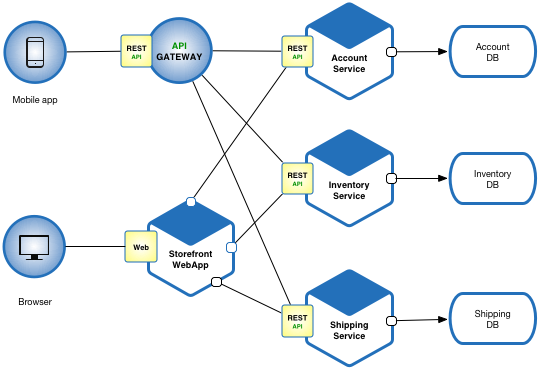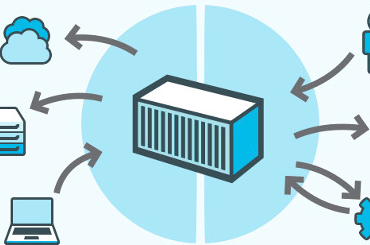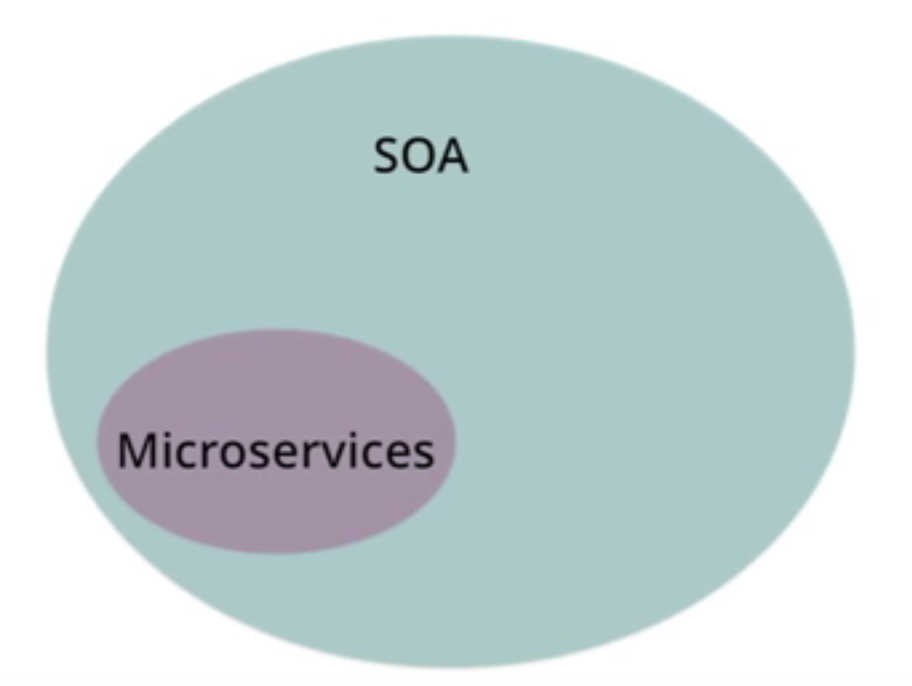Source – enterprisersproject.com You can operate microservices without containers. However, microservices and containers are a dynamic duo, the IT equivalent of milk and cookies. “Microservices – single-function services built by small teams, independent from other functions, and communicating only through public interfaces – simply make a great match for containers,” as Red Hat technology evangelist Gordon Haff recently noted. “Microservices plus containers represent a shift Read More
Tag: Microservices

Source – informationweek.com IT teams can salvage the value of legacy systems while pivoting to a new foundation offering better customer experiences. CIOs and their teams are routinely maintaining costly, long-running legacy systems that have gathered a large amount of data about purchases, services, and customer behavior over the years. Sure, they’re getting a bit creaky Read More

Source – techtarget.com A service registry sits between a client and server in a network and controls access between both of them. It is a critical part of the application stack and has a big impact on the end-user experience. With the growing use of microservices, the role of a service registry has become even more important Read More

Source – infoworld.com Nginx has introduced an application server for microservices environments. The open source Nginx Unit is designed for environments where developers use multiple languages in their deployments. It’s typical in microservices to use multiple languages and thus have multiple software stacks to manage and control, the company says. In its beta release this week, Nginx Unit Read More

Source – enterprisersproject.com Even Match.com could not have done a better job finding a mate for microservices. Microservices – single-function services built by small teams, independent from other functions, and communicating only through public interfaces – simply make a great match for containers. Microservices plus containers represent a shift to delivering applications through modular services that Read More

Source – zdnet.com At the core of any DevOps initiative is the judicious employment of containers and microservices, which dramatically speed up and simplifying the jobs of developers and operations teams alike. While many of the tried-and-true rules of IT management apply, containers and microservices also add new considerations, and new ways of doing things. To Read More

Source – techtarget.com when it comes to working with microservices applications. Let’s look at three API design principles to follow when implementing APIs for microservices. There are three principal people who are responsible for the API design strategy: the business leader, the enterprise architect and the developer. An API design strategy begins with business leaders, Read More

Source – jaxenter.com Enterprises are increasingly turning to a microservice architecture for new applications to achieve greater agility and scalability, and the software industry is supporting them with development frameworks and tools for creating microservices. Yet, these don’t operate in a vacuum and often require an effective approach to integration. The challenge is that building integration Read More

Source – networkworld.com There’s no doubt that digital transformation (DX) is revolutionizing the way we do business, and cloud computing serves as a key cog in the DX machine. Cloud’s elasticity can indeed help digital businesses communicate more rapidly and increase innovation. But to extract full value from the cloud, companies must make sure that they Read More

Source – siliconangle.com In between meeting with customers, crowdchatting with our communities and hosting theCUBE, the research team at Wikibon, owned by the same company as SiliconANGLE, finds time to meet and discuss trends and topics regarding digital business transformation and technology markets. We look at things from the standpoints of business, the Internet of Things, big data, Read More

Source – blog.risingstack.com A Microservices architecture makes it possible to isolate failuresthrough well-defined service boundaries. But like in every distributed system, there is a higher chance for network, hardware or application level issues. As a consequence of service dependencies, any component can be temporarily unavailable for their consumers. To minimize the impact of partial outages we need to build Read More

Source – techtarget.com exactly how many microservices it should include. The answer is important, because including too few or too many makes a huge difference in effectiveness and manageability. Read on to learn how to use containers and codebase analysis to decide. Why microservices? Microservices architectures have become popular over the past several years because they make Read More

Source – sdtimes.com Microservices are in the spotlight, as infrastructure building blocks, because they offer decoupling of services, data store autonomy, miniaturized development, testing set up, and other benefits that facilitate faster time to market for new applications or updates. The availability of containers and their orchestration tools has also contributed to the increase in microservices Read More

Source – veracode.com I am not a fan of tapas. I’ll take the 22-oz. bone-in ribeye over small plates any day. My wife is the opposite; she loves them. With more tapas bars opening and existing restaurants adopting a “small plate” menu, I find myself losing the battle of steakhouse vs. tapas quite often. After several Read More

Source – techtarget.com In this Q&A, Daniel Bryant, CTO at SpectoLabs and an independent technical consultant, talks about some of the challenges that come up when addressing microservices security and some of the tools and techniques you can use. Compared to more traditional architectures, what new challenges have microservices introduced in terms of security? Daniel Bryant: Read More

Source – techtarget.com Most enterprise development teams will end up using cloud-hosted microservices. The question for most will be where to start, because picking poor candidates early will slow or even discredit microservices adoption. The best microservices use cases fall into four categories, and every enterprise should look for one or more of these for suggested early Read More

Source – jaxenter.com “Microservices Architecture” is now a popular concept in programming. In order to keep up-to-date as a software developer, I’ve been trying to get a good understanding of this architecture. Specifically, I’ve been looking at a better way to implement microservices architecture in Java using Spring. Some background: my company, although great, had a Read More

Source – searchmicroservices.techtarget.com Containers aren’t a new concept; the first steps toward Linux containers were taken in 1979. Since then, there have been about a dozen new evolutionary steps in container deployment of applications, and we’re not done yet. Containers are also interacting with supporting technologies, like DevOps, and competing ones, like virtual machines (VMs), to create Read More

Source – infoq.com We’ve had a few articles over the years on the differences and similarities between SOA and microservices. Some suggest there is much to be learned from SOA whereas others believe that distancing microservices from SOA is more beneficial. Furthermore, Neal Ford amongst others, have suggested that moving from monolithic architectures to a services-based approach may be easier than going to Read More

Source – business2community.com Over the decades, the monolithic, tiered approach to building software has given way to a more distributed, component-based architecture commonly referred to as “microservices,” although some components aren’t “micro” at all. Separating out an app’s services into isolated, interoperable containers has revolutionized the way developers are able to update, add to, or expand parts of an app. Read More

Source – infoworld.com With every innovation comes new complications. Containers made it possible to package and run applications in a convenient, portable form factor, but managing containers at scale is challenging to say the least. Kubernetes, the product of work done internally at Google to solve that problem, provides a single framework for managing how containers Read More
